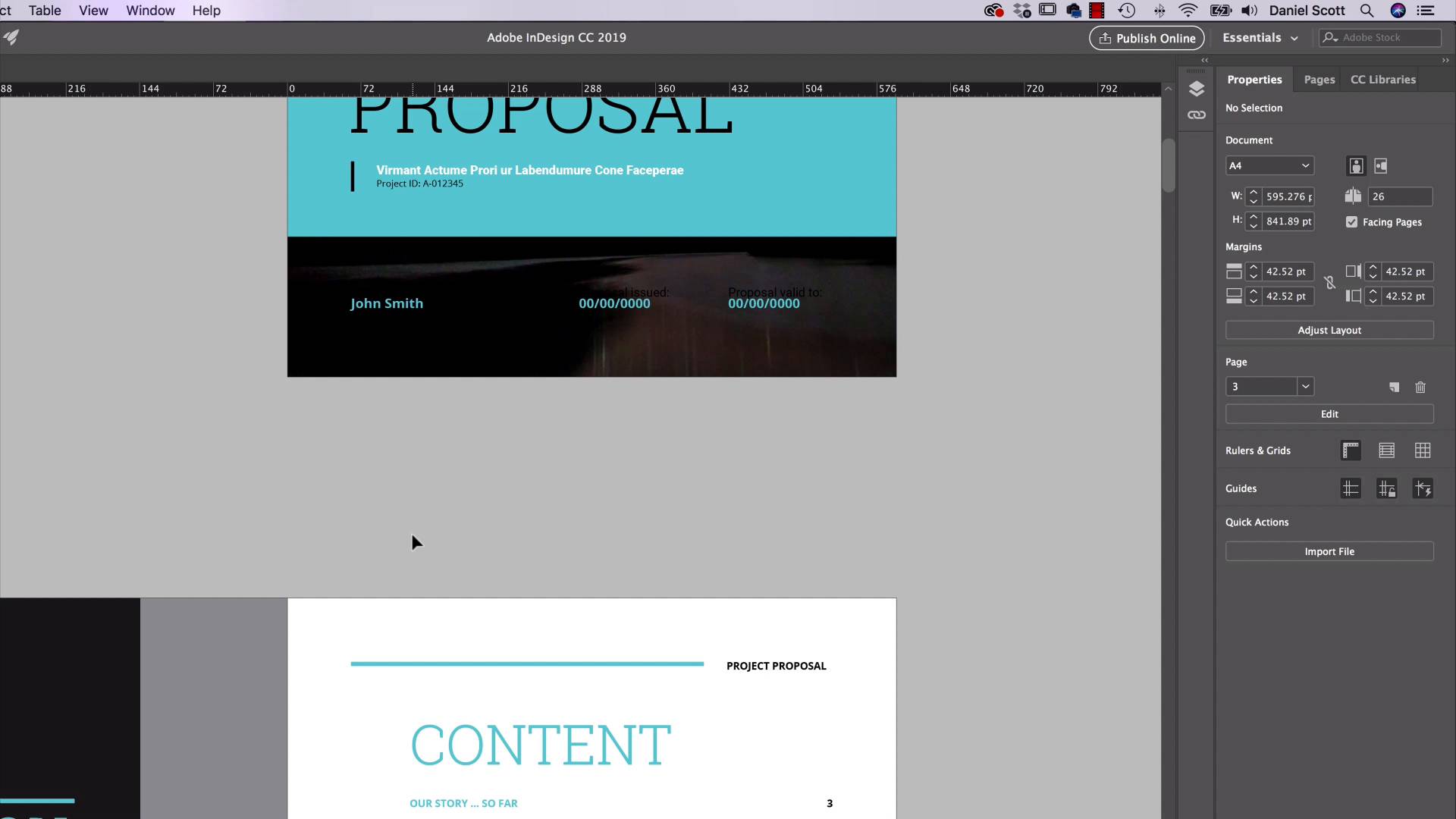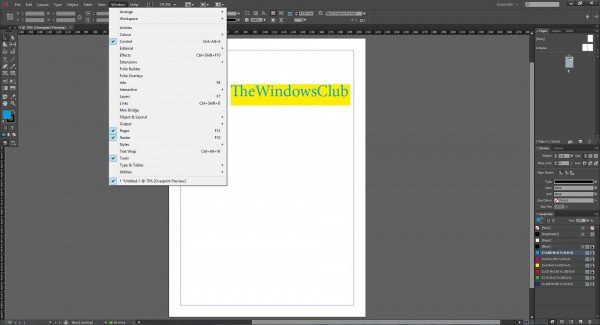
#Adobe indesign quick tutorial software
Desktop Publishing - Popular DTP SoftwareĭTP software comes in all shapes and sizes. This means all the changes and formatting that are made will be exactly replicated in print.

The process is called WYSIWYG which stands for, ‘What You See Is What You Get’. Virtual pages allow the author to visualize exactly how the printed page will look and can help in easy editing. Virtual pages on the other hand are electronic pages created in the DTP software which are eventually published as printed pages.

This tutorial is an example of an electronic page which can be opened in a browser. which are normally not printed but are shared digitally. The content created by DTP software can be broadly classified into two categories −Įlectronic pages commonly refer to websites, manuals, eBooks, digital archives, presentations, etc. Modern DTP software enables content output that caters dynamically to all screen sizes, without the need to republish the same for each device or form factor. With the explosive growth of smartphones and mobile PCs, the way people consume information has changed dramatically over the last decade. A modern DTP software can be your word processor, graphic design tool and publishing tool, all rolled into one package. Evolution of DTP SoftwareĮarlier, DTP was specifically meant to cater to printed matter but modern DTP allows for even more forms of electronic content. DTP has evolved to be an important component of creating and disseminating information as it allows an amalgamation of various tasks that are generally performed independently at printing presses such as layouts, typesetting, graphic design, etc. They can be helpful for aligning objects and looking at the spaces around objects.Desktop Publishing (DTP) is the creation of electronic forms of information such as documents, presentations, brochures, books, or even website content using computer programs. Most appear in light blue (by default) on your document and do not print out but are used for reference only. Select Guides to pull up a selection of guides to use. Fill consists of a color and can be turned off or different from the stroke color.Įnabling guides - right clicking on the page brings up a menu. This can also apply to text.įill - the space surrounded by anchor points is what is filled. Stroke - stroke is the outline of an object. Vector files are typically smaller than raster/pixel files. A basic straight line has only two anchor points by default. Vector objects consist of reference points rather than pixels. Inserting bullets or numbering - when you have a text box, the bullet feature and numbering options appear at the top bar towards the middle.Īnchor point - an anchor point refers to a point on the page that is making up a vector object. Inserting columns - a text box must be created before you can insert a table or columns.

Formatting of the text can be done with most of the controls on the top bar. Use the "T" button on the toolbox and drag a square where you would like the text. Inserting text - a text box must be created in order to use text on a page. Master page - acts as a template for all other preceding pages. If you know you will be working with columns, you can initiate it here. Layout is done when a new document is created.
#Adobe indesign quick tutorial update
It references the file path of that object and will update when changes are made to that particular object in other Adobe programs. Inserting a picture is done with the file -> place command. The Media Center has the CC version of InDesign. Saving a document in InDesign cannot be opened with anything but an Adobe product.


 0 kommentar(er)
0 kommentar(er)
